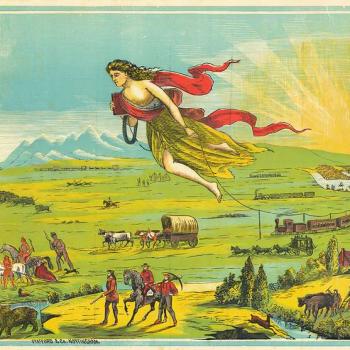David P. Goldman offers a close reading of our national anthem, which is not just a hard-to-sing-song but a striking and meaningful poem, one that connects the survival of Ft. McHenry during the War of 1812 to the survival of the nation in every generation:
. . .It behooves us to sing a national anthem that begins and ends with questions. In this respect, “The Star-Spangled Banner” is an unusual poem. To begin a poem with a rhetorical question is a common enough device (“Why! Who makes much of a miracle?,” “What is so rare as a day in June?” or “Who rides in the night through wind and wild?”). Key’s opening question, though, is not rhetorical, but existential. The hearer from whom the poet demands a response has kept the poet’s company in an anxious vigil. The question itself thus places the hearer alongside the poet in that vigil.
The poet withholds the name of the object we are trying to espy in the first light: It is “what so proudly we hailed,” “whose broad stripes and bright stars” streamed valiantly over the rampart as the poet and his interlocutor watched through the perilous night. And this precious thing could be glimpsed intermittently only by the light of the enemy’s munitions, through the glare of rockets and the flash of exploding bombs: these, the missiles of the foe, gave proof through the night that the our flag — at last the object is named — was still there.
But now the first light of the dawn has come. The bombardment has ceased. The poet asks that the listener say whether, in the dim sunrise, he still can see the flag above the ramparts. It is an anxious moment; the hearer has watched through the night to see if the US position has held or fallen; in a few moments he will see in the first light of day whether the flag is still there. All the fears of the nightly vigil are bound up in this moments of anticipation. Even more: the hopes and fears of generations hang upon what the hearer will see as day breaks..
And then the poet repeats the injunction “Say!” and changes the question. The opening question — can you still see our flag? — is a synecdoche of sorts for a bigger question — does that flag “yet wave/O’er the Land of the Free and the Home of the Brave”? The second question refers not only to the battle at hand, but to the destiny of the country. The question is not only whether the flag of freedom still flies over America but also whether America itself is still brave and free.
The fearful vigil through the nocturnal bombardment, the fleeting glimpse of the national colors, the moment of truth in the gathering light of dawn — these are a metaphor for the national condition. The flag enduring the enemy bombardment is only a symbol for the true subject of the poem, namely the reaction of the hearer himself. The opening “Say!” placed us at the poet’s side at dawn; the second “Say!” makes this a metaphor for the national condition. Key addresses the second “Say!” to all generations of Americans: Are you still brave enough to be free? Your national existence, implies the poet, will be a long vigil, in which America’s true character will be glimpsed sporadically in the reflection of enemy attacks.
Again, Key’s question is not rhetorical, but existential: the answer to the question depends on the response of we who hear it. There are few instances of the second person in poetry with which to compare this, although the device is very ancient. A few come to mind. One is the Song of Deborah in Judges 5:2. Another is Simonides’ epitaph for the three hundred Spartans who held the pass against the Persians at Thermopylae in 480 BC. “O passer-by: tell the men of Lacedaemon that we died doing our duty.” The poignancy of the epitaph is that these dead men must ask a passer-by to bring the news to their homeland. The reader of the epitaph figuratively becomes the messenger. In John Donne’s familiar “Ask not for whom the bell tolls/It tolls for thee,” the subject becomes not death in general, but the very personal death of the hearer. And the second-person address in Francis Scott Key’s anthem asks each of us: “Are you good enough to be an American?” It is a question we should ask ourselves every day.
via Spengler » A National Anthem that Begins and Ends with a Question.












